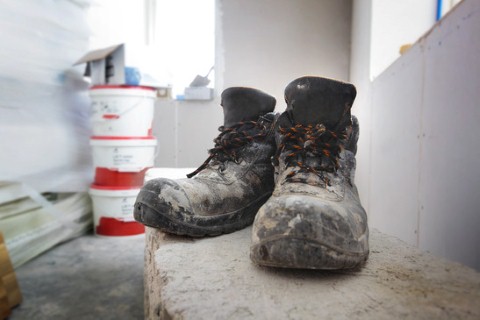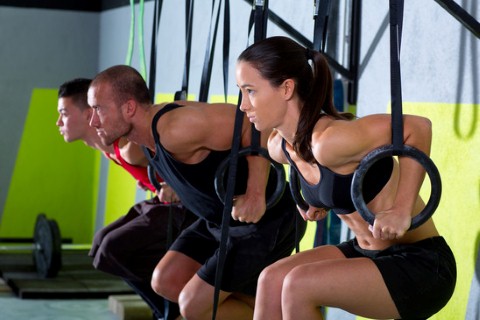Confused about outdoor sports shoes? This multi-faceted area of footwear has gotten beginners confused for the longest time. But that all stops today. Read on to find the ultimate guide to learning about outdoor shoes and turn yourself into an educated consumer
All men are created equal. But not all outdoor sports shoes were crafted with the same thought in mind. Sometimes, there are a few that simply do the job better than other models. So what makes an outdoor sports shoe stand out from the rest?
3 Qualities You’ll Find in all the Best Outdoor Sports Shoes
Whether it’s for running between the bases or a big football game or playing frisbee, the best shoes come with a certain set of qualities that set them apart:
 Breathability – Since you don’t play in air-conditioned stadiums and sanitized areas, the world becomes your playground. You don’t want your feet to suffocate inside your socks while you’re waiting for the quarterback to receive the ball. You want to feel aerodynamic and free. Not to mention the fact that suffocating shoes breed germs that could lead to infections. So the cream of the crop make sure that your feet are snug yet free.
Breathability – Since you don’t play in air-conditioned stadiums and sanitized areas, the world becomes your playground. You don’t want your feet to suffocate inside your socks while you’re waiting for the quarterback to receive the ball. You want to feel aerodynamic and free. Not to mention the fact that suffocating shoes breed germs that could lead to infections. So the cream of the crop make sure that your feet are snug yet free.- Durability – But it’s not the durability you can think of. Take note that you don’t play on smooth surfaces. You’ll be running on dirt, stone and a lot of uneven surfaces. The parts don’t just have to be stitched well together, your soles have to be built for war. They have to be thick enough to neutralize sharp, uneven surfaces from hurting your foot but have to be light enough not to slow you down when you need speed.
- Versatility – An interesting quality that all sports-shoes have in common is the ability to allow you to bend and stretch the fabric. This gives you the freedom to kneel for sprints, find your footing for trekking, bend your toes onto your pedals and a lot more. If your shoes can’t do any of that, you’re better off going barefoot.
The best shoes were designed to make it feel like your foot just got a lot thicker. That’s how you tell if you’ve got a sweet pair of kicks.
How to Find the Best Hiking Boots for Men
 There’s nothing like hitting the beaten path and pitting your feet against Mother Nature herself. Trekking tests your stamina and rewards you in ways you’ve never imagined. But before you can reach your destination, you have to prove your mettle. And what better to do this than to equip yourself for the outdoors than with the best shoes?
There’s nothing like hitting the beaten path and pitting your feet against Mother Nature herself. Trekking tests your stamina and rewards you in ways you’ve never imagined. But before you can reach your destination, you have to prove your mettle. And what better to do this than to equip yourself for the outdoors than with the best shoes?
- Match your trail to your boot – Different trails need different treads. Aggressive treads work well in snow rough roads because they cling to the ground. That gives you more stability to go uphill. Lighter shoes with less grooves underneath provide a more enjoyable walk through pre-set trails around parks. Understanding the terrain will help you find a boot to work well with it.
- Check their materials – You’ll find out if a boot is sturdy by doing so. Most old-school boots are made with real leather. That makes them dependable and resistant to the elements. That also means they’re heavier and dry less quickly. Synthetic leather on the other hand is lighter and more suited to less strenuous treks. Match it to your needs.
- Ask about Crampon compatibility – A Crampon is a spiked boot attachment that allows you to take your foot to the ice and other steep slopes that need your feet to stick. Different Crampons attach to different types of boots. Some lesser brands don’t even have Crampon compatibility at all. Be sure to check if you can fit those unto your shoes unless you want to buy a separate pair and spend a lot more money.
3 Tips to ensure Your Hiking Boots are the Perfect Fit
Of course the fit of your hiking boot is an issue completely separated from its other qualities. What good is a sturdy and dependable shoe if it cramps your foot? Here’s how to find that Cinderella-trekker fit for you.
- Shop at the end of the day – After a full day of activities, your feet tend to swell a little bit. That represents the largest size it can handle after strenuous activities. Trying out shoes in the morning with a fresh pair of feet is like buying a shirt that’s two sizes smaller: you’re always going to come back to have it replaced.
- Sock it Up – Wear the kinds of socks you’ll be wearing out if you’re trying on a new pair. Make sure that your socks are thick enough for the terrain yet light enough for your feet to breath. Simulate and actual trek with your set-up when checking out boots.
- Take her for a Spin – Don’t just marvel at yourself in front of the store mirror. Take them for a stroll inside. Walk up the stairs, find some ramps, bend it a little bit to see if it can handle what you have to offer.
At the end of the day, it’s all about compatibility. Different trekkers have different feet. What could be a match made in heaven for one person could actually be the worst possible idea for you. And although recommendations and testimonials will help you select a brand and model, you should always go with what feels right for you.
What to Consider if You’re Looking to Find the Best Work Boots for Men
Besides play, boots are also important when it comes to work, especially if your job requires you to be in the presence of dangerous materials and environments. In these cases, comfort is only second to safety. Consider these following features when shopping for some work boots.
 The Toe – Go for something with a reinforced toe area. This is because your toes are the least agile part of your body. Whether you’re working with lumber, heavy equipment or nails, make sure that your boots can handle something heavy or sharp falling on them. Steel toes are the most basic form of protection, but now you’ve got aluminium and composite toes to choose from as well. If you’re working in an environment that changes its temperature drastically, you might want to go with composite shoes that don’t transfer heat as well as steel toes. You obviously don’t want to cook or freeze your feet.
The Toe – Go for something with a reinforced toe area. This is because your toes are the least agile part of your body. Whether you’re working with lumber, heavy equipment or nails, make sure that your boots can handle something heavy or sharp falling on them. Steel toes are the most basic form of protection, but now you’ve got aluminium and composite toes to choose from as well. If you’re working in an environment that changes its temperature drastically, you might want to go with composite shoes that don’t transfer heat as well as steel toes. You obviously don’t want to cook or freeze your feet.- The Plate – A Puncture Plate to be specific. This is a sheet of metal sandwiched in the bottom of the shoe that can deflect sharp objects you might step on at work. Working becomes more enjoyable when you’re not afraid of stepping on a rusty nail, right?
- The Grip – Of course, this doesn’t refer to how nice the shoe feels when you hold it in your hands. This refers to the outsole grip that meets the floor, ladder, slope, steps or any inclined plane that will elevate you to reach what you’re working on. A good outsole grip means that you won’t slip or lose your balance when you’re up high. It’s a nice thing to have if you’re a window-washer.
If you can make sure that all three of these features are in your boots of choice, then you have less time to worry about your foot and more time to focus on your job, which is all that matters at the end of the day.
How to Choose the Best Shoes for Crossfit
Compared to working in the field, Crossfit shoes play along a different line. Here, you’ll be doing all sorts of activities that will really take your feet for a spin. You’ll be running and lifting your way to health. And that means your shoes should be able to keep up with you and those high-intensity workouts.
- So focus on Durability – This is the workout of your life. Each day will bring new exercises and challenges to your body. You could hit the monkey bars today then suddenly find yourself weight lifting the next. A durable pair of crossfit shoes should be able to last you about half a year before you need to have it replaced. Anything less than that is sub-par.
- Also look at Breathability – Your feet need to stay fresh in those shoes the whole time. That includes the times you sweat out all that burned fat and calories. A breathable shoe helps keep your feet fresh and away from infections and bacteria.
- Finally, prioritize balance – Go with something right in the middle of heavy and light. You want something heavy enough to provide you with a stable base for good posture when lifting. But you also need something light enough so as not to slow you down. Be sure to squat and kneel in any pair that you’re trying out.
Additionally, comfort should also be there. You want to focus more on the task at hand rather than worry about how your feet are doing inside your kicks.
5 Reasons Why a Crossfit Shoe is Different From a Regular Training Shoe
If you’re asking if it’s better to do Crossfit in training shoes rather than Crossfit shoes, you might want to take a look why these two are different to see why one is favoured over the other.
- Training shoes are specific – That means training shoes are designed to work well with only one particular activity. That could be running or athletics. Crossfit shoes on the other hand, are designed with no specialization in mind. Crossfit pulls elements from gymnastics, calisthenics, weight-lifting and triathlons to bring about a healthier body. You don’t want to keep on changing your training shoes for that, right?
 Training shoes are less sturdy – Like their name implies, they’re only meant for training. That means less strain on the body and more focus on comfort. Crossfit isn’t training. It’s conditioning. In fact, this method of conditioning is so intense that it’s the recommended training method for police and military personnel before they get their badges. Have you ever seen SWAT work out with training shoes?
Training shoes are less sturdy – Like their name implies, they’re only meant for training. That means less strain on the body and more focus on comfort. Crossfit isn’t training. It’s conditioning. In fact, this method of conditioning is so intense that it’s the recommended training method for police and military personnel before they get their badges. Have you ever seen SWAT work out with training shoes?- Training Shoes don’t have Offsets – And you need to watch your offsets with Crossfit. Offsets refer to the height of the heel relative to the position of your toe. It’s also known as the “drop”. Higher drops are good for beginners who need more stability. Lower drops are best for reinforcing the calves in advanced users.
- Training Shoes are needlessly heavier – What support and power you can achieve with training shoes, you can get through Crossfit shoes via less offset in exchange for weight. You can’t use a lot of foot weight in Crossfit. You’ll never know when you need to burst into a sprint. This means that extra weight from training shoes can only slow you down.
- Training Shoes are not made for running – And withe Crossfit, you’re going to do a lot of it. The side support on a training shoe is not suited to continuous running, so that will make your sprints a lot more awkward and difficult.
Although not to say that training shoes are bad choices, but you wouldn’t want to bring a sword to a gun fight, right? There’s a proper shoe for the proper activity.

